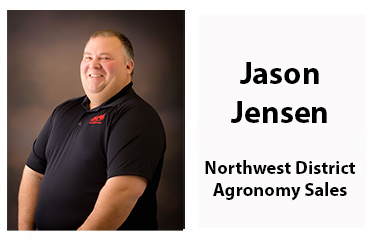Pre-emerge with little rainfall
May 08, 2023

In the last few weeks, I have had multiple questions as to how are pre emerge chemicals are going to work with little rainfall. There is little doubt in my mind that if you are going to keep ahead of weeds that a good 2-pass program is the first step no matter the weather.
Below is a recent email from Austin Studer of Corteva Agriscience that talks about chemicals and rainfall:
The excitement of getting the crop planted & sprayed can quickly turn to concern that the herbicide is applied to the surface and not rained in.
Some customers may wonder, “Have I wasted my money on the pre-emerge application?” Short answer - - - you didn’t waste your money.
For the residual herbicide to be effective, the herbicide needs to be in soil solution for plant uptake.
Weeds need moisture to germinate – the same lack of rain that is leaving your herbicide on the surface is leaving most of your weeds in their seed capsule.
We plant corn & soybeans 1.5-3” deep where there is consistent moisture to germinate. And these large seeds have plenty of food reserve to emerge from these depths. Small seeds like alfalfa, foxtail or waterhemp rarely survive if they germinate that deep as they don’t have the food reserve in the seed to push from those depths.
Once the herbicide is in the soil solution, most of our residuals can enter the weed & provide control.
- Group 15 products (acetochlor, metolachlor…) enter into the seed itself with first water or into the shoot above the seed and stop growth. These don’t have any effect on emerged weeds.
- Group 2, 5, 14 & 27 (FirstRate, atrazine, Sencor, Valor, Authority, Sonic, Enlite, Callisto…) enter plants primarily through the roots, so even if a seedling has emerged but is still small, these products are known to “reach back” and still provide control if herbicide can surround the entire root system. Reach-back is more effective on broadleaf weeds than grass. These same products also enter foliage for some contact activity.
- Rainfall needed depends on how dry the soil is, but ¼” moisture is a minimum amount with some products requiring closer to 1” moisture to get into soil solution.
- Herbicides are more persistent in or on dry soil because degradation slows down with the lack of moisture and lack of microbial activity which breaks products down.
- Some sunlight breakdown (photo-degradation) can occur but today’s products aren’t nearly as susceptible as those used 30 years ago
- Volatilization losses are possible, but we don’t use many of these products except “yellow’s”.
- A rotary hoe will move some product into the soil, but not necessarily into the soil solution as typically soils are dry in the top crust.
- Most importantly, a hoe helps eliminate germinated weeds – so it does fill a good weed control purpose.
Two pass programs with residual in both passes. If we miss some weeds early due to lack of rainfall, the post-emerge can control these escapes and adding residual to already existing residual in the soil keeps control going deeper into the season
Talk to your local SFG agronomist if you have any concerns about your planned chemical program, and we would be happy to discuss with you.